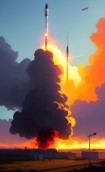- mlmp08
- Jul 11, 2004
-

Prepare for my priapic projectile's exalted penetration
-
Nap Ghost
|
DOD transcript and vid, highlights, then intro and excerpts as I see fit. I have not cut anything, because this was a fairly efficient press conference and there was not a lot of repeating or rewording the same question. So highlights will be lighter than usual as well. Or maybe I'm lazy cause it's a Friday.
Link to transcript in full: https://www.defense.gov/News/Transc...ssistant-secre/
Link w/ video: https://www.defense.gov/News/News-S...field-dynamics/
Link to aid summary: https://www.defense.gov/News/Releases/Release/Article/3261263/more-than-3-billion-in-additional-security-assistance-for-ukraine/
Highlights:
-Top 3 Ukrainian military needs right now are air defense, artillery and long-range fires, and armor. [This is from the pool of capability needs partners can fulfill, so obviously ignores manpower]
-PDA announced totaling $2.85 bn in drawdown and $225 in foreign financing to encourage others to donate. What's a PDA? https://crsreports.congress.gov/product/pdf/IF/IF12040
-US will train a battalion's worth of Ukrainian troops per month (~500) on combined arms, hosted in Germany
-US already supported tank transfers by joint efforts and funding for items like T-72 tanks
-No specific timeline on when Bradley training will be complete.
-No effect on backfill or aid funding based on lack of speaker of the House right now (this PDA funding was previously approved by congress)
-Ukraine is in the lead on any negotiations to end or alter conflict.
-No details on JDAM integration
-RIM-7 (sea sparrow) integrates with the Buk system (tracked, mobile short-range air defense system of Soviet/Russian design. Pretty good system)
-This package provides offensive capability, but the US will not comment on Ukraine's plans about any offensives; ask Ukraine
-Russia still faces C2 and logistics challenges, and more manpower via mobilization or conscription can exacerbate those challenges rather than fix them [my comment: This could be pretty heavy spin in a few ways. Could be to downplay Russia's significant manpower advantage over Ukraine, could be a way to demur if Russia is seeking to slowly but surely try to attrit Ukraine so Russia can make a move later, could be an attempt to keep people from abandoning Ukraine if Russia successfully executes another mobilization, could be messaging aimed at Russia to encourage digging in/waiting, could be a lot of things]
-lol, US neither confirms nor denies possession of psychic attack capability.
-Emphasizes that the Abrams is both a gas guzzler and is quite difficult to maintain.
quote:
BRIGADIER GENERAL PAT RYDER: All right. Well, good afternoon, everyone. Joining us today in the briefing room is Deputy Assistant Secretary Of Defense for Russia, Ukraine and Eurasia Laura Cooper, who will provide some remarks about today's announcement regarding the approval of the 29th presidential drawdown authorization, authorization in support of Ukraine security assistance, and afterwards, we'll be available to answer any questions that you have. Thank you, Secretary Cooper, over to you now.
DASD LAURA COOPER: Thank you. Good afternoon. I am proud to be here today to discuss the Biden Administration's commitment of over $3 billion in security assistance for Ukraine. As President Biden said yesterday, the war in Ukraine is at a critical point right now, and we have to do everything we can to help the Ukrainians continue to resist Russian aggression. Today's announcement, the largest security assistance package, and total value that we have committed so far, reflects our enduring commitment to support Ukraine. This package includes the authorization of presidential drawdown of equipment from U.S. inventories valued at up to $2.85 billion and it includes an additional $225 million in foreign military financing to contribute to the long term capacity and modernization of Ukraine's military.
So, let me highlight some of the capabilities included in this package. First, as President Biden announced yesterday, we are committing 50 Bradley Infantry Fighting Vehicles, with 500 TOW anti-tank missiles and 250,000 rounds of 25 millimeter ammunition. The Bradley vehicles will further enhance Ukraine's ability to conduct complex maneuvers in almost all weather conditions and terrain, especially in the south and the east of the country. The Bradley is a tracked armored vehicle that is agile, provides mounted firepower, and is a significant anti-armor capability. This complements a series of armor commitments by the United States and our allies. These include a French commitment of AMX-10 light tanks, a German commitment of martyr infantry fighting vehicles, both announced this week, as well as a recent joint us Netherlands commitment to provide upgraded T-72 tanks.
This package also includes 100 M-113 armored personnel carriers, 55 Mine Resistant Ambush Protected vehicles or MRAPS and another 138 Humvees. These additional M-113s, beyond the 200 we have already committed will further enhance Ukraine's fleet of tracked armored vehicles to support operations in the eastern South. We have now committed more than 1300 Humvees to enable Ukraine to protect and transport their forces during maneuver operations. The MRAPS will improve Ukraine's ability to maneuver including through heavily mined terrain.
In addition, the package includes significant artillery commitments. These include 18 self-propelled -- propelled 155-millimeter howitzers, known as the paladin system, and an additional 155-millimeter -- and additional 155-millimeter artillery rounds. This is the first commitment of U.S. commitment of the self-propelled howitzers, which will provide greater protection and maneuverability than the towed howitzers previously provided and will complement self-propelled howitzers already provided by allies. We are also providing an additional 36 105-millimeter towed howitzers to strengthen Ukraine's layered approach to fires as well as 105-millimeter rounds. These capabilities will complement and work with the expanded U.S. led training beginning this month that will build Ukraine's capacity to conduct joint maneuver and combined operations. We will ensure Ukraine has both the equipment and the skilled forces necessary to sustain its efforts to push back on Russian aggression.
We are also committing 4000 Zuni aircraft rockets, which can be mounted on Ukraine's existing aircraft to engage air or ground targets in the category of air defense, which is still a top priority for Ukraine. Given Russia's ongoing missile attacks, we are committing RIM-7 missiles. These can be integrated into Ukraine's Soviet-era tactical surface to air missile systems. And this provides the Ukrainians with additional capabilities to defend against Russian aerial attacks. We will continue to support Ukraine's urgent requirement for air defense capabilities to defend against Russia's brutal attacks, which is you noticed continued throughout the holiday season. We commend Germany for its important commitment this week to also supply a Patriot air defense battery to Ukraine. This will supplement the U.S. donation of a Patriot battery announced in December.
On the ground in Ukraine, we continue to see intense fighting during this winter, especially in the east, around Crimea and Bakhmut. Ukrainian forces -- forces are showing an undiminished will to fight to defend their country. Ukraine will continue fighting through the winter with the backing of a large coalition of nations, and we continue to encourage allies and partners to make additional donations to bolster Ukraine's combat and air defense capabilities. The United States has now committed more than $24.2 billion in security assistance since Russia's full-scale invasion last February, and we will continue to support Ukraine for as long as it takes.
Thank you and I look forward to your questions.
GEN. RYDER: Thank you very much, ma'am. We'll start with Associated Press Lita Baldor.
Q: Hi, thanks a lot. I guess a question on the Bradleyís. A lot of critics would say that it's taken too long for the U.S. on the west to send something send the Bradley's and complain that the U.S. has not sent tanks yet. Can you address that and the reluctance to send sort of an Abrams tank? And then -- another -- just a quick thing? When do you expect the training on the Bradley's to begin? Where will that take place? And when do you expect them to arrive? Even though you don't want to give a specific date, generally when do you expect them to arrive?
MS. COOPER: Sure, thanks, Lita. So, in general, I want to emphasize again, that we are always looking at what Ukraine needs and providing them what they need when they need it and their battlefield needs have evolved over time. One of the considerations that we look at is certainly the capability that -- that an item of equipment would offer. But we also have to look at things like maintenance and training, sustainment, and cost plays a factor certainly at times. In the case of the Bradley, what you are seeing is a recognition that this is the right time for us to provide this armored capability. This is the right time for Ukraine to take advantage of its capabilities to change the dynamic on the battlefield. And from a maintenance and sustainment standpoint. And this is really important. The Ukrainians have demonstrated a lot of growing proficiency in maintenance and sustainment, both within Ukraine and relying on new systems that we have set up with our allies and partners to provide what we call tele-maintenance in many instances. So, at this point, the Ukrainians really are set up for success once we are able to train them on the system.
And I think it's important to note that this also comes at the auspicious time that we are expanding our training program. Many of you have heard about our launch, that will happen later this month, of new combined arms training. So, we will be able to enable the Ukrainians to take advantage of this capability. And again, not just actually to employ it on the battlefield, but to maintain and sustain it. When you -- in terms of your question about the timing. It'll take a couple of months basically, to get this capability fielded to get the Ukrainians trained, that -- that new training program that we're starting, it's roughly a battalion's worth of forces at a time. So, roughly 500 soldiers over the course of roughly a month, and we're adding on the Bradley training. But the -- the tank capability that you that you reference, this is something that we absolutely agree that Ukraine does need tanks. It's one of the reasons that we partnered with the Netherlands to refurbish a number of T-72 tanks that are already arriving on the battlefield. But we have to be cognizant of maintenance and sustainment considerations with tanks, and certainly we know that the Abrams tank in addition to being a gas guzzler is quite -- quite challenging to maintain. So, we want to look across the board at the range of tank capabilities, and -- and see where we can all support Ukraine. But again, we're already doing that with the T-72 tanks. And now we see France also with their light tanks.
GEN. RYDER: Thank you very much, maíam. Let's go to Phil.
Q: You know, there's a lot of talk about a potential new Russian offensive. I'm wondering, do you think that's possible? If without a second mobilization, what would it take for Russia tends to stage into the middle of a major offensive? And also, what do you read into the offer the ceasefire offer from -- from Putin? Do you think that was just a ploy? Do you think the -- the Russian forces are looking to reset and try to buy time?
MS. COOPER: Thanks. I'll take the second part first, Phil. So, in terms of, you know, the statement by Putin about the ceasefire, I can tell you we see fighting today in Ukraine, even though technically we're in the ceasefire window. So, you know, even if you -- you thought that this was just a propaganda ploy, you know, on the ground, it's not playing out. And in terms of this notion of arrest and refit, certainly, we do assess that Russian forces are in dire need of rest and refit. But the short span of time for this ceasefire is not consistent with that. So, once again, it's a statement from Putin that we have to take with a grain of salt. This is the same man who said he would not invade Ukraine. So, in terms of your -- your broader question, though, about what we can expect to see on the battlefield in the in the kind of near to midterm, I think you will see Russian forces, you know, trying to advance, you know, trying to mobilize what they can. In the case of what we've seen in, in Bakhmut with Wagner forces, in many cases, it's conscripted, you know, convicts on the battlefield. So, I think you'll still see Russia trying to employ this tactic of just sending wave upon wave of forces to try to gain what ended up being very marginal territorial gains. Whether you're talking, you know, meters or miles, it really isn't substantial. And I think we'll still see more of that. But I think you will also see this dynamic of the Ukrainians, as we are training them, as they are, you know, making use of this new equipment by the U.S. and the allies, we will see the Ukrainians also able to move forward and to change this dynamic on the battlefield. And that's what we're focused on.
Q: Second mobilization, would that be, you know, militarily necessary for Russia to make more than very incremental grants? And, and also, you know, do you believe that the Russians still have the desire to retake, you know, big swathes of Ukraine?
MS. COOPER: I assess that -- that Putin has not given up his aims of dominating Ukraine and continuing to acquire Ukraine's territory. So, I do not think his aims have changed, but the reality of Russian weaknesses, the Russian Armed Forces weaknesses has collided with those aims. And, you know, one of the weak points that you mentioned is the human capital element. And so, it is clear that to be able to advance, the Russian forces do need to be a federal quality, but our training and morale is a factor too. And that's one that Russia has been unable to affect.
GEN. RYDER: And if I can just add on to that, you know, to DASD Cooper's point, just adding more people is not going to address some of the systemic issues that that the Russian military has faced throughout this campaign. In fact, it makes it more difficult to conduct operations. And so, while in places like Bakhmut, where you see Russia, conducting offensive operations, and making some of those incremental gains, largely along that front line they have dug in, to defend the lines and defend the territory that they had taken. And so, as you look at the U.S. and the international response by providing the equipment, and importantly now the training that we're providing, it does afford Ukraine an opportunity to change the equation on the battlefield and gain momentum and defend not only defend their territory, but hopefully take back territory. And so, this is part of that ongoing effort to support them in that in that larger campaign.
OK, let's go to Jen.
Q: What impact is the lack of a speaker of the house and a lack of actually a House of Representatives right now having on your ability to supply Ukraine with weapons or carry out the work in Ukraine?
MS. COOPER: I'm still pushing forward providing the Ukrainians what they need when they need it.
Q: So, no impact.
MS. COOPER: My day-to-day is not affected right now.
GEN. RYDER: Thank you. Let's go to Patrick Tucker at Defense One.
Q: Hi, thanks for doing this. I wonder if you could speak really briefly to how you plan to backfill the Bradley's? Are there going to be new contracts for new Bradley's or how you're going to address the backfill needs given today's announcement?
MS. COOPER: Thank you. So, with -- actually with the Bradley's, it's the same as with all of our capabilities that we are providing to Ukraine. Congress has granted us replenishment funds, so that we can actually go out and purchase capabilities to backfill what we have provided in cases where it's an ongoing need. Now, I don't have the specific contracting details to offer, but that is the case with -- with each of these areas of capability.
GEN. RYDER: Thanks. Let's go to Nick.
Q: Thanks for doing this. Pat Ryder just used the term take back territory you use the term -- term to change the dynamic on the battlefield. Can you speak specifically to what you hope Ukraine can do and or achieve with this particular group of weapons? And I know it's bit of beating a dead horse, but to Lita's question going back to the tanks, you said that there's maintenance and sustainment considerations, would they rooms the Ukrainians would say, with all due respect, you had those concerns with other weapons, and we have proven we can sustain and maintain anything that you give us. So, can you respond again to the Ukrainian desire for tanks, but also saying that, hey, we can overcome any challenges that you may see.
MS. COOPER: OK, so on the tank issue, it's about the right capability in multiple facets and maintenance and sustainment is one of them, and it's an important one, especially when there's alternate capabilities that, you know, might -- might offer easier maintenance or sustainment. But I stand by that earlier statement that what we are looking at is providing them with what they need when they need it. And the Bradley is a capability that we could envision them really using to great effect along with the training. It's not a capability without the training, it's just a piece of equipment otherwise. So we're providing, you know, the equipment, the training, the ability to maintain and sustain, both through training but also through actually ensuring they have the right, you know, the right parts, and that they have the right know how and access to the right know how. This is a capability that, combined with this training, will enable them to change this -- when I say change this dynamic, it's this dynamic that you see right now where it's, you know, inches forward, whether it's the you know, the Russians and Bakhmut, or, you know, even the Ukrainians trying to kind of inch forward. We believe that through the combined arms training, they will better be able to integrate all of their different capabilities, that includes artillery, you know, all range all types of fires, as well as maneuver to be able to make greater progress on the battlefield, and really push back on these Russian position. So, that's what we're looking forward to seeing in the coming months.
Q: Sorry, just to (inaudible) that you just said it's inches forward now or what are you saying, you know, General Ryder just said, take back territory. Is there a specific territory? Is there a specific achievement that you believe this package of weapons can enable the Ukrainians to (inaudible)?
MS. COOPER: We take our lead from the Ukrainian objectives. So, the Ukrainians have, you know, their plans, their vision of where they want to press forward on the battlefield? We certainly, you know, give them advice. And as I said, you know, give them equipment and training to be able to meet their objectives, but I'm not going to speak for what Ukraine's specific near-term territorial objectives are.
GEN. RYDER: Thanks very much. Tony.
Q: A couple of questions. Hi. Is it fair to say that the U.S. is basically positioning Ukraine to conduct massive armor formation attacks on the Russians?
MS. COOPER: We are positioning Ukraine to be able to move forward and retake territory and, and be able to, you know, defend themselves against this persistent onslaught of Russian missile attack.
Q: To what extent are you having to cobble together a command-and-control system so that French vehicles and German vehicles and U.S. vehicles can talk to each other in layman's language?
MS. COOPER: Well, so you know, certainly there are different vehicles, but I mean, look at the battlefield in Ukraine today, we see so many different types of equipment from so many different countries. We see Soviet-type equipment and you know, modern, NATO interoperable equipment. So, I think the Ukrainians are experts at, you know, using different types of equipment and still being able to operate as a coherent force. And in terms of like, specifically on communications, you know, over the years, we've provided thousands of individual secure communications sets to the Ukrainians so we know that they can take advantage of those to be able to communicate and operate in a mobile fashion.
Q: What's the weapons -- air -- air question. JDAM kits are supposed to be going over the joint direct attack munitions kits. When will Ukrainian Air Force be hot-wired or the avionics of new airplanes be adjusted so they can actually drop these weapons? We're talking the next month or two, or is that a longer-term process?
MS. COOPER: So, Tony, when it comes to some new capabilities, we like to give the Ukrainians a chance to actually operate these capabilities and feel them before we talk about the specifics. So, I'm not going to give specific timelines.
GEN. RYDER: Thanks. Let's go to Fadi, and then I'll go back to the phones.
Q: Thank you, General. Thank you, Deputy. So, I want to focus maybe on the bigger picture in light of this biggest package of assistance, and the hope that you both express that this training, and the new equipment will aid the Ukrainians in retaking more territory. Is the assessment of the department and the administration writ-large that there is no political solution for this war, and the only way to end it is by basically a victory by Ukraine to change Putin's calculus?
MS. COOPER: We've said before, and I'll reiterate it that our focus is on giving the Ukrainians the strongest possible position at the negotiating table, when they choose to move forward with negotiations, and they are in the driver's seat with that.
Q: Does the U.S., with all these commitments and billions of dollars from taxpayers, have any say in these negotiations, whether to create incentives for Ukraine, when the time is right, or it's ultimately only Ukraine's decision.
MS. COOPER: Again, Ukraine is in the driver's seat with negotiations, and we are here as their supportive partner.
GEN. RYDER: And Fadi to your point, I mean, this is at least from a U.S. government standpoint, this is an interagency process, right, which includes bipartisan support from Congress, the elected representatives of people on that on that note, but again, if you step back, and you look at the consequences of not supporting a country like Ukraine that was illegally invaded, what precedent does that set, and how expensive would it be to have to address the kind of world we would live in? Should we not support Ukraine and countries like that? So, alright, let's go ahead and go to the phones here.
Q: General, just a quick follow-up. I mean, these are two different things supporting Ukraine to defend itself is -- there is wide base support for it in the Congress. But this is different from supporting as well, political negotiations to end to end war. I mean, they can go hand-in-hand, and there's no contradiction. So, my question was very, very precise to the fact that the U.S. is being the biggest beneficiary for Ukraine. Does the American people or the administration have any say, or even creating incentives for Ukraine to when the right -- when the time is right to engage in negotiation? Because it seems like no one is talking about any end for this war so far?
GEN. RYDER: Sorry, go ahead, ma'am.
MS. COOPER: No, I mean, I think I think we answer the question in terms of certainly the U.S. has a huge stake in this. And certainly, the Ukrainians are, you know, are listening to us all the time as close partners, but when it comes to making these decisions about the specifics of the negotiations, the Ukrainians have to take the lead there.
GEN. RYDER: Yeah. OK, let's go to the phone here. Jeff Schogol, Task & Purpose.
Q: Thank you. I noticed there is a number for the RIM missiles. I was wondering if you could give us if not a number than a range. And also, Foreign Policy is reporting that the Kremlin is concerned that a foreign government could launch a psychic attack on Kremlin officials. Does the U.S. Government have any weapons or personnel who can get into the enemy's thoughts?
GEN. RYDER: Psychic -- psychic attack.
MS. COOPER: OK. So, on the on the missile, you'll notice that when we provide air defense missile capabilities, we do not give numbers. That is for operational security reasons. And we will maintain that tradition with this package. And I have nothing on your second -- second topic.
GEN. RYDER: Thanks, Jeff. Let's go to Matt Siler, ABC.
Q: Hi, thank you. Ms. Cooper, you told one of my colleagues earlier that the lack of a house speaker doesn't concern you at the moment. I had a related question. Bloomberg reported today that Kevin McCarthy is in discussions over a deal to help secure support for that role among Republicans that could include a $75 billion cut to defense spending. I just want to ask you if that's something the prospect of such a cut is concerning, and how that might affect your ability to support Ukraine.
MS. COOPER: Well, thanks. I could tell you that we have enjoyed tremendous bipartisan support for Ukraine security assistance, and, you know, while I certainly would imagine that the details of that assistance will evolve over time, I still would anticipate, you know, strong -- strong support from the U.S. Congress. And we will continue to partner with the Congress and ensure that we are working with them to, you know, to address our national security needs, to include by protecting Ukraine's sovereignty.
GEN. RYDER: Mike.
Q: Yeah, could you assess the relationship on the battlefield between the Wagner group and the Russian mainline military? Are they working together? They work in cross purposes? Are they fighting each other? Rather than fighting Ukraine? I mean, there seems to be two military forces, you know, meaning violates unity of command and a bunch of other principles of war. How does the Pentagon assess the relationship between them?
MS. COOPER: Well, I can say it certainly isn't, you know, a traditional unit relationship, like you would see with other units of the Russian military. But at the same time, you know, Wagner is not this completely independent entity, it is certainly operating as part of an overall Russian military invasion of Ukraine, with the, you know, the support cognizance and leadership of, you know, Russian -- Russian leaders -- leaders, Kremlin leadership, and military leaders. And, you know, it is drawing on resources of the Russian state in a very novel way to include by drawing on, you know, convicts and, you know, sending them into battle, killing, you know, hundreds and hundreds of, of these individuals in the process. So, it is a symbiotic relationship, and at times a coordinative relationship.
GEN. RYDER: OK. Courtney.
Q: I just want to ask one more time about on this package, because I was struggling, I think it was Lita's question at the very beginning when you, Ms. Cooper, when you said that this is the right time for the Bradley's, and I'm still just not clear. I mean, the thing that really stands out to me about this package is there's a lot of vehicles that are just basically people movers another Bradley's have the TOWs, but like, they also have like a tank and move people around. And then you got you have like, you know, 200 vehicles, for moving people. So, why is it the right time? Like, what is the capability? Or what are you looking at that the Ukrainians are planning to do on the battlefield that, that they need to be moving people around?
MS. COOPER: OK, so again, when I talk about, you know, changing that dynamic on the battlefield and enabling the Ukrainian Armed Forces with additional capability, it is so that they cannot just, you know, apply artillery to a given position, but can also integrate with maneuver and actually be able to regain territory, and the Bradley specifically has formidable anti-armor capabilities that will work against you know, every -- every kind of armored capability that Russia has fielded in Ukraine. But the -- but the Ukrainians need more than that. And that's why, you know, you see us surging other types of mobility capabilities, not just the United States, again, but also allies.
GEN. RYDER: Oren, and then we'll go to Wafaa.
Q: Two different questions. First, on the RIM-7s, what -- what platform will the Ukrainians use to launch them? Have you adapted them to dork with s3, hundreds or something like that? And, and how long did that take? Because that's not something you do overnight? And then the second question is completely different. I was wondering if you could give an overview of what changes you've seen on the battlefield. Now that Russia's new theater commander has been in for a couple of months at this point General Surovikin.
MS. COOPER: OK, so on the first one, the -- the RIM-7 will integrate with the Buk system. So, this is a Soviet type of system, but the s 300. You mentioned that's strategic range, whereas the Buk is a shorter-range system. And, you know, it is a creative solution that did require some engineering, finesse. But, but we're -- we're very pleased that it will work for the Ukrainians, in terms of you know, changes since, you know, Surovikin took to command, you know, there has -- you know, there's been a lot of, you know, a lot of dynamics on the battlefield. And it's, it might be hard to attribute them to, to Surovikin himself. But I would say that, you know, the one of the more notable developments, of course, before the holidays was the return of Hassan to, to Ukrainian control, and that withdrawal of Russian forces that occurred, and more recently, it's that surge with Bakhmut -- in Bakhmut of Wagner forces. So, in the recent past, we've seen that Wagner is advancing at a more rapid clip than any other unit in the Russian military.
GEN. RYDER: Time for a few more. Wafaa and then we'll come back.
Q: Thank you, ma'am, for doing this. So, obviously, the price tag of the security is getting bigger with each package. And also, the debate here in Washington about how and when this assistance will continue is growing. Also, if you can talk a little bit more about the strategic gain that United States is obtaining from this war, and if it's worth the cost.
MS. COOPER: Thank you. I would say that, you know, from an overall strategic perspective, it is hard to -- to emphasize enough the -- the devastating consequences if Putin were to be successful in achieving his objective of taking over Ukraine. This would rewrite international boundaries in a way that we have not seen since World War II. And our ability to reverse these gains and to support and stand by the sovereignty of a nation. It's something that resonates not just in Europe, but all around the world. Because no one wants to send a signal to another bully around the world that they can take over their neighboring country without paying a steep, steep price.
GEN. RYDER: OK, let's go to Mike.
Q: The Sea Sparrows, you put them on the Buks? That's a proliferated system. That's a ground or ground-to-air capability now. Is that going to have a severe impact on Russian drones? Or cruise missiles? Or is it going to be a little bit of trimming around the edges? That's the first one. And then the second is should we think of these 50 Bradley's as the first tranche?
MS. COOPER: OK, so on the -- this question of the Buk system, with air defense, you can never consider one system in isolation. It's all about the layered air defense with multiple systems with different ranges applied over broad geographic territory, protecting key nodes. So, you know, Buk is an important system at the, you know, for short range. And the Ukrainians I -- I'm sure will be masterful at employing this new missile on this system that they are very familiar with. But it's only in concert with these other capabilities that the Ukrainians can continue to successfully shoot down this withering attack of, you know, by cruise missiles, and, you know, Iranian purchased drones and other -- other threats from -- from the air.
And I forget the other question.
Q: (Inaudible).
MS. COOPER: Oh, we're always -- we're always looking at what comes next. So, I'm not gonna say that this is the end. But I'm also not going to say that it's the start, I'd go back to the ally piece. And, you know, to preview for you, we do have later this month, another one of our Ukraine defense contact group meetings where Secretary Austin gathers 50 defense ministers, and they consult with the Ukrainian leadership with Minister of Defense Reznikoff and his team about Ukraine's needs. Well, the fact that we're already seeing these, you know, these very major contributions being announced by Germany, the Patriot and the Marder by the French, and others, we would certainly expect to continue to see additional announcements, either in the lead up or as in conjunction with Ukraine defense contact group.
So, again, I wouldn't just look at the United States for these capabilities. But look at the broader picture.
Q: There's 11 countries that have countries have Sea Sparrows. Do you expect some other countries to start donating from their magazines as well?
MS. COOPER: You know, I don't have any -- any specific information on that particular capability, although I do have a very long list of capabilities that allies have. But off the top of my head, I'm not sure.
GEN. RYDER: Let's go to Howard Altman, and we'll ask the last two questions here in the room.
Q: Thanks, appreciate it. Can you tell me which version of the Bradley that Ukraine we'll be getting and then talk about provisions for spare parts for that? Thanks.
MS. COOPER: I think I just heard with a version of the Bradley it's the MTA to Bradley. And I think you said spare parts. And yes, we are providing spare parts again. And, you know, support for maintenance.
GEN. RYDER: OK. Sir.
Q: On the Zuni rockets. Can you detail that capability a little bit more? And along with the recent JDAM provision there seems to be a shift to provide Ukraine with some air strike capabilities. So, why is that was that decision made now to give these rockets and these guided munitions? And what -- what can they do with these Zuni rockets?
MS. COOPER: So, in terms of providing Ukraine with capability for their aircraft, it's actually something we've been working on for a while. Several months ago, we provided them with HARM missiles. And they've been using them really to great effect from their legs. So, this is really just the latest in in efforts to help them to make their existing aircraft fleet as effective as possible. And you know, the Zuni aircraft rockets, we're providing 4,000 of them. And they can be -- they can be mounted on fixed -- fixed or rotary wing aircraft. And again, it's air-to-ground but it's at fairly close range. These are not long-range capabilities.
Q: How -- just -- how hard is that modification to make to mount?
MS. COOPER: Again, again, I think I trust our engineers, and I definitely trust the Ukrainian engineers. So, they -- they have done this successfully. And, you know, it is something that that is possible.
GEN. RYDER: OK, Kasim, and then the final question.
Q: (Inaudible) you said, technically, we are in the ceasefire window, the fighting continues. Can you confirm that Russians have violated the Putin's unilateral declaration of ceasefire? That's one question. I have another separate question.
MS. COOPER: Well, I can confirm that there is fighting. And of course, it's, you know, Russians, on the ground, fighting. So, yes.
Q: The other question about Patriots. Could you update us place on the Patriots, when the training is going to start? And when will we see the Patriots being (inaudible) in Ukraine?
MS. COOPER: Yes, so we will start training for Patriot later this month. But I'm not going to be able to give you a specific timeframe for the completion of training. It will take several months. So, again, Patriot is not an immediate term capability. But we will start that training very soon.
GEN. RYDER: OK, final question.
Q: Thank you so much. A quick follow up when you started, you mentioned tele-maintenance of these new systems being sent over? Can you elaborate a little bit on that and the digital capabilities that go with that? And then separately, broadly, thinking about the hundreds of millions in foreign military financing. What types of systems are you guys anticipating allies to be using that funding on?
MS. COOPER: OK, thank you. So, the FMF that I mentioned is just the FMF for Ukraine. So, for Ukraine, we haven't specified exactly what capabilities will be purchased via this -- this particular FMF tranche. But FMF is a longer-term funding source. So, it will -- it will not be these kinds of immediate battlefield needs that we're attending to with a drawdown package that we're discussing today.
Q: Can you elaborate on the types of systems, maybe that you're anticipating,
MS. COOPER: Well, I'll just -- I'll just reiterate kind of what are the top priorities for Ukraine and the top priority capability needs for Ukraine. And certainly this will evolve over time, but -- but probably not for a while. Air defense is a top priority. So, we'll still be looking at air defense investments. And so, will the allies. Artillery, so artillery and long-range fires, this is where our HIMARS system has been so -- so fantastic. But there's a number of ways that allies and the U.S. have supported Ukraine with artillery needs.
And then today, I talked a lot about armor, which is that third piece. There are there are other capability needs, but those are the top three and on tele-maintenance. I think I can't get into kind of the technical detail of exactly which systems we're using. But it's exactly what it sounds like where, you know, Ukrainian operators, wherever they are in Ukraine, if they need assistance, with repair work, they don't necessarily have to take the equipment out and get, you know, a Western manufacturer to help them. They can actually just dial up this capability and get advice and have, you know, experienced personnel walk them through the steps so that they can get it right back into the battlefields.
|


 ", there's no reason the government would allow the army to secretly make their own clandestine training program for vehicles Ukraine may never even get, that would be a collossal waste of everyone's time.
", there's no reason the government would allow the army to secretly make their own clandestine training program for vehicles Ukraine may never even get, that would be a collossal waste of everyone's time. to believe that there is some secret training going on as long as the government loudly says "no" over and over. You believing the decision is too late is not really helpful for discussion, imho. We can just say "OK." and that's it. So thanks for your insight, for what's it worth. For the count, I disagree. Back then, Germany decided it made more sense to send old Soviet stuff the Ukrainians already know how to use, and so Germany spend all this time sending poo poo to our neighbors and restricting Western stuff to minimize the amount of new training Ukrainian soldiers would need.
to believe that there is some secret training going on as long as the government loudly says "no" over and over. You believing the decision is too late is not really helpful for discussion, imho. We can just say "OK." and that's it. So thanks for your insight, for what's it worth. For the count, I disagree. Back then, Germany decided it made more sense to send old Soviet stuff the Ukrainians already know how to use, and so Germany spend all this time sending poo poo to our neighbors and restricting Western stuff to minimize the amount of new training Ukrainian soldiers would need. 
 https://medium.com/@x_TomCooper_x/ukraine-war-7-january-2023-part-2-67a12db31c03
https://medium.com/@x_TomCooper_x/ukraine-war-7-january-2023-part-2-67a12db31c03







































